How to Build a Vision Board That Actually Works (A No-Nonsense Guide)
For years, I’ve helped people create vision boards, and let’s be honest, most get it wrong. They treat it like a fun little arts and crafts project, a scrapbook of pretty things. But a vision board isn’t a magic wish catalog where you paste a picture of a fancy car and wait for it to appear in your driveway. Sorry, that’s not how this works.
In this article
A well-made vision board is a serious tool for focus. Think of it as a visual business plan for your life. It’s a physical, daily reminder of what truly matters to you, helping you make smarter choices that actually align with your goals. The method I’m about to share is less about wishful thinking and more about defining a clear path forward. So, let’s build a board that serves as a guide, not just a decoration.
Why This Isn’t Just Woo-Woo Fluff
Before you grab the scissors and glue, it’s crucial to understand why this works. This isn’t mysticism; it’s grounded in how your brain operates. Deep inside your brain is something called the Reticular Activating System (RAS). Its main job is to filter the insane amount of information bombarding you every second, deciding what you notice and what gets ignored.
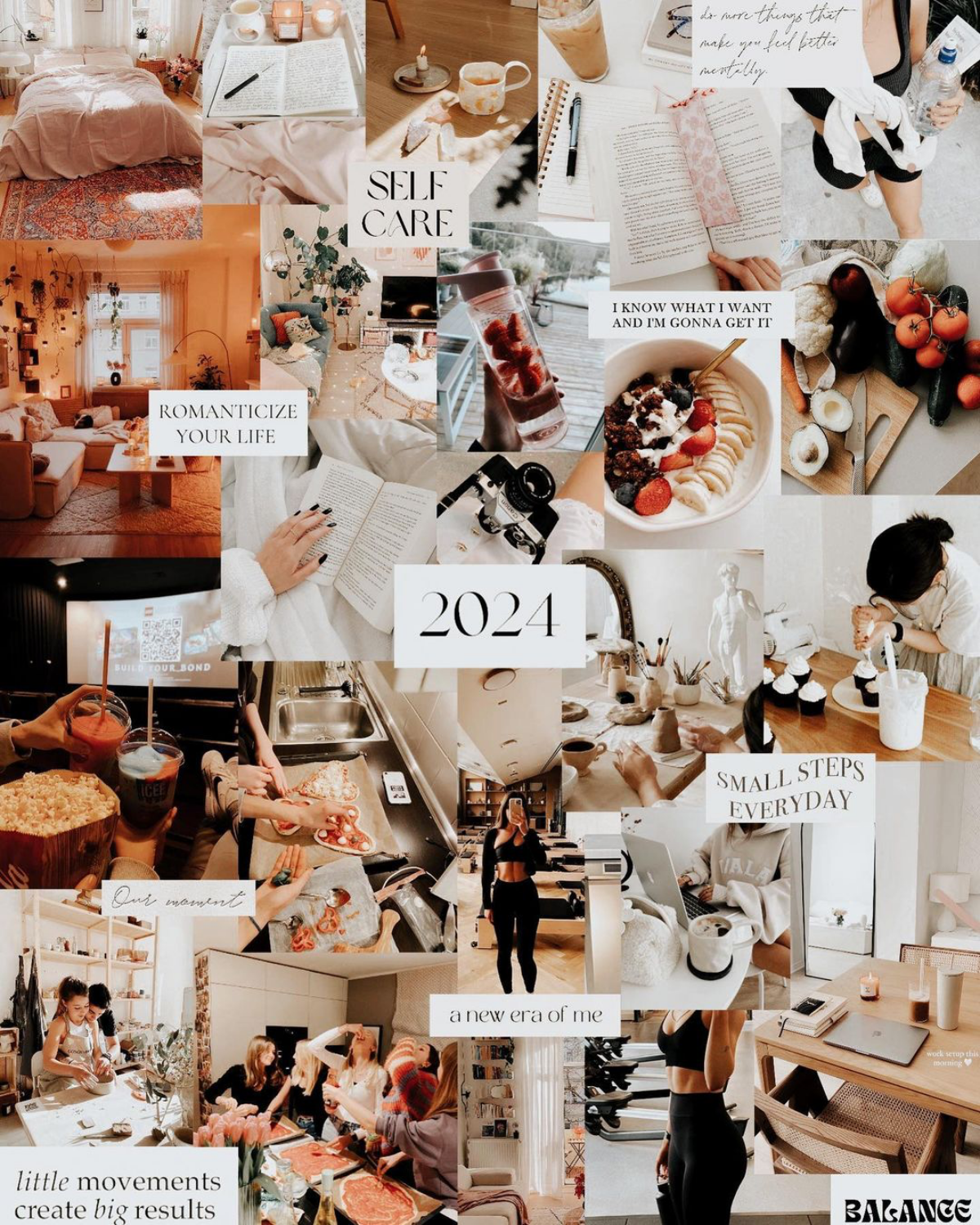
Ever decided you wanted a specific type of dog, and then suddenly you start seeing that breed everywhere you go? That’s your RAS in action. You told your brain, “Hey, this is important now,” so it started flagging it for you. A vision board does the exact same thing for your goals. By creating a vivid, visual map of what you want, you’re basically programming your brain to spot opportunities, people, and resources you would have otherwise missed.
It also taps into a psychological concept called “priming.” When you consistently look at images and words tied to your ambitions, you prime your brain to act in ways that support them. If a picture representing physical fitness is on your board, you’re just a little more likely to notice the gym on your commute or skip the extra slice of pizza. The board doesn’t force your hand; it just keeps the better choice top-of-mind.
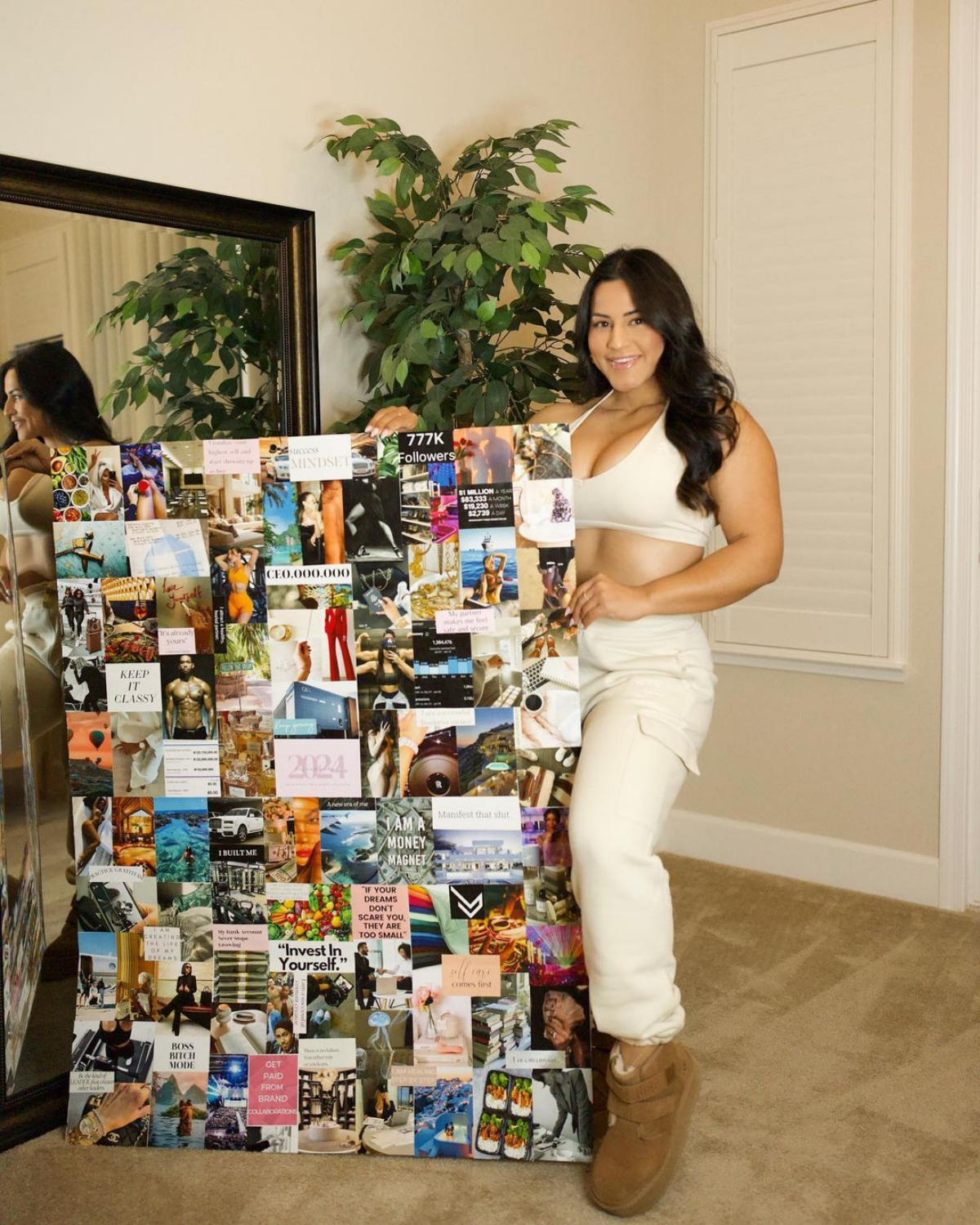
The Real Work: Figuring Out What You Actually Want
Here’s the single biggest mistake people make: they start with a stack of magazines. This is a recipe for disaster. You end up with a cluttered board full of things advertisers told you to want, not what you genuinely desire for your life. The most important work happens long before you touch a single image.
You need to block out at least an hour of quiet, uninterrupted time for this. Seriously, put it in your calendar. To guide this process, I have my clients focus on four key areas to ensure a balanced life.
Why not try this right now? Grab a pen and paper and just jot down one quick thing for each of these categories. Don’t overthink it. See what comes up.
- Growth (What you want to learn or become): Think about skills you want to master (like learning to code or getting good at baking sourdough), or personal qualities you want to cultivate (like becoming a better listener or more patient).
- Experiences (What you want to do or feel): This is the fun part. Where do you want to travel? Be specific! Not just “a vacation,” but “See the northern lights from a glass igloo.” What feelings do you want more of in your daily life? Calm, energy, creativity, connection?
- Contribution (How you want to give back): How do you want to make an impact, big or small? This could be mentoring a junior colleague, volunteering for a local cause, or simply being a more present parent or friend.
- Foundation (The stuff that supports everything else): This covers the essentials. What does good health look like to you (running a 5K, sleeping 8 hours)? What’s your financial goal (saving $5,000 for a down payment, paying off that one nagging credit card)? What about your relationships and your home environment?
Write it all down. “Make more money” is a wish. “Increase my freelance income by 25% by launching a new consulting package” is a goal. This clarity is the fuel for your vision board.
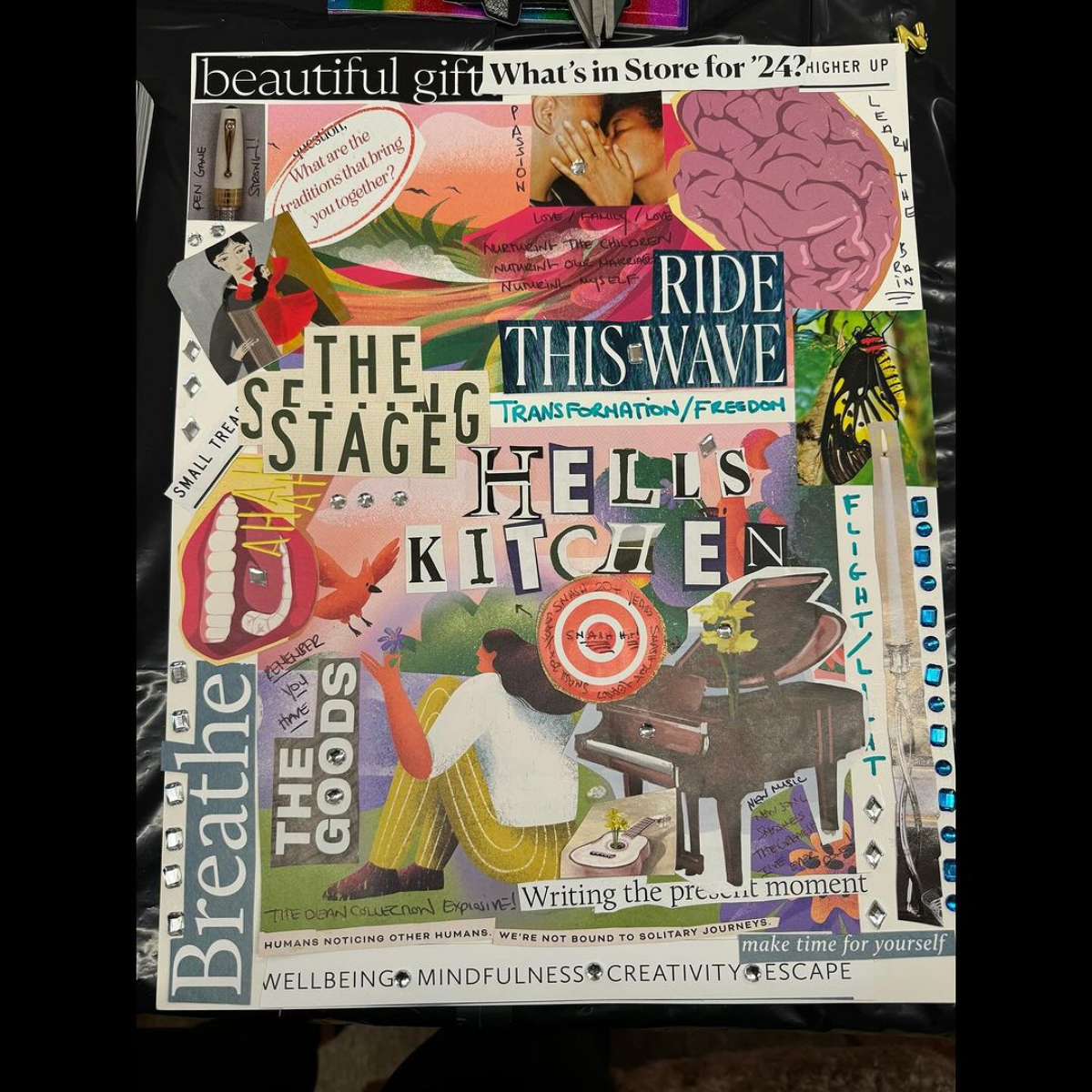
Gathering Your Supplies (Without Breaking the Bank)
Okay, now that you have your goals defined, it’s time to gather your materials. You don’t need to spend a lot of money, but being intentional here helps.
For the board itself, you’ve got a few solid options:
A simple foam core board is the cheapest route, but whatever you glue down is pretty much permanent. My top recommendation, especially for beginners, is a cork board. They usually cost between $15 and $30 at a craft store or on Amazon for a decent size (a 24×36 inch board is a great starting point). The best part? You use pushpins, which means your board can evolve as your goals do. It becomes a living document. A magnetic whiteboard is another fantastic, flexible option, letting you use magnets and write notes directly on the surface.
As for images, please step away from the magazines. They are literally designed to create feelings of lack. Instead, try these sources:
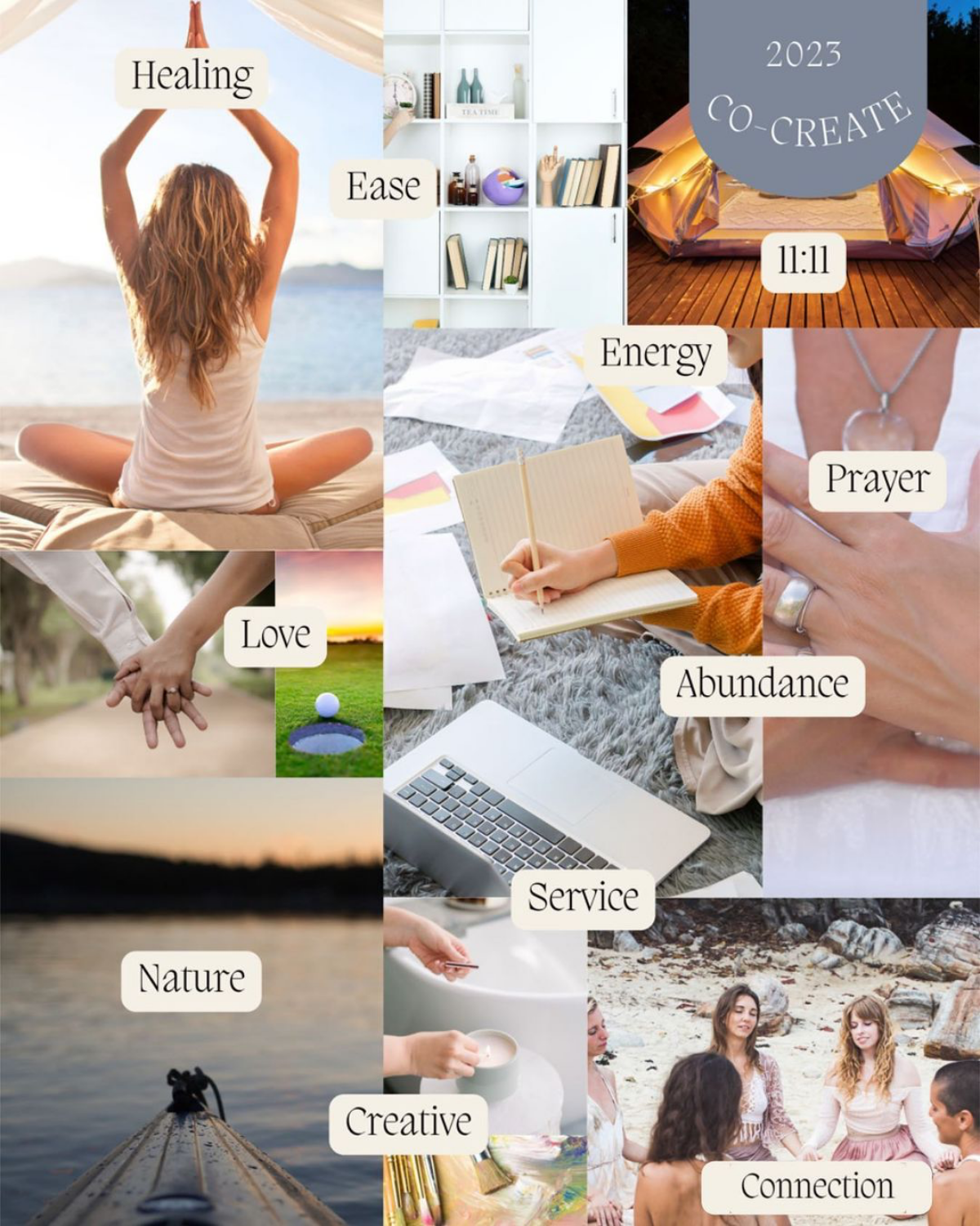
- Your Own Photos: Got a picture from a time you felt deeply happy, proud, or at peace? Use it! Personal memories are incredibly potent.
- Online Stock Photos: Websites like Unsplash and Pexels have millions of beautiful, free images. Search for the feeling behind your goal. Instead of “wealth,” try searching for “freedom,” “security,” or “peace of mind.”
- Specific Searches: If your goal is to learn pottery, find an image of hands shaping clay. The more specific, the better.
- Words and Textures: This is a great tip for people who aren’t super visual. Print out powerful words like “Focus,” “Finish,” or “Breathe.” Find color swatches or textures that evoke the feeling you’re after. A calming blue or a warm, earthy brown can be just as powerful as a picture.
Quick shopping list idea: You can realistically get this whole project done for under $40. Think: a $20 cork board, $3 for a pack of nice pins, and maybe $5-$10 for printing a few high-quality images at a local library or office supply store. Easy.
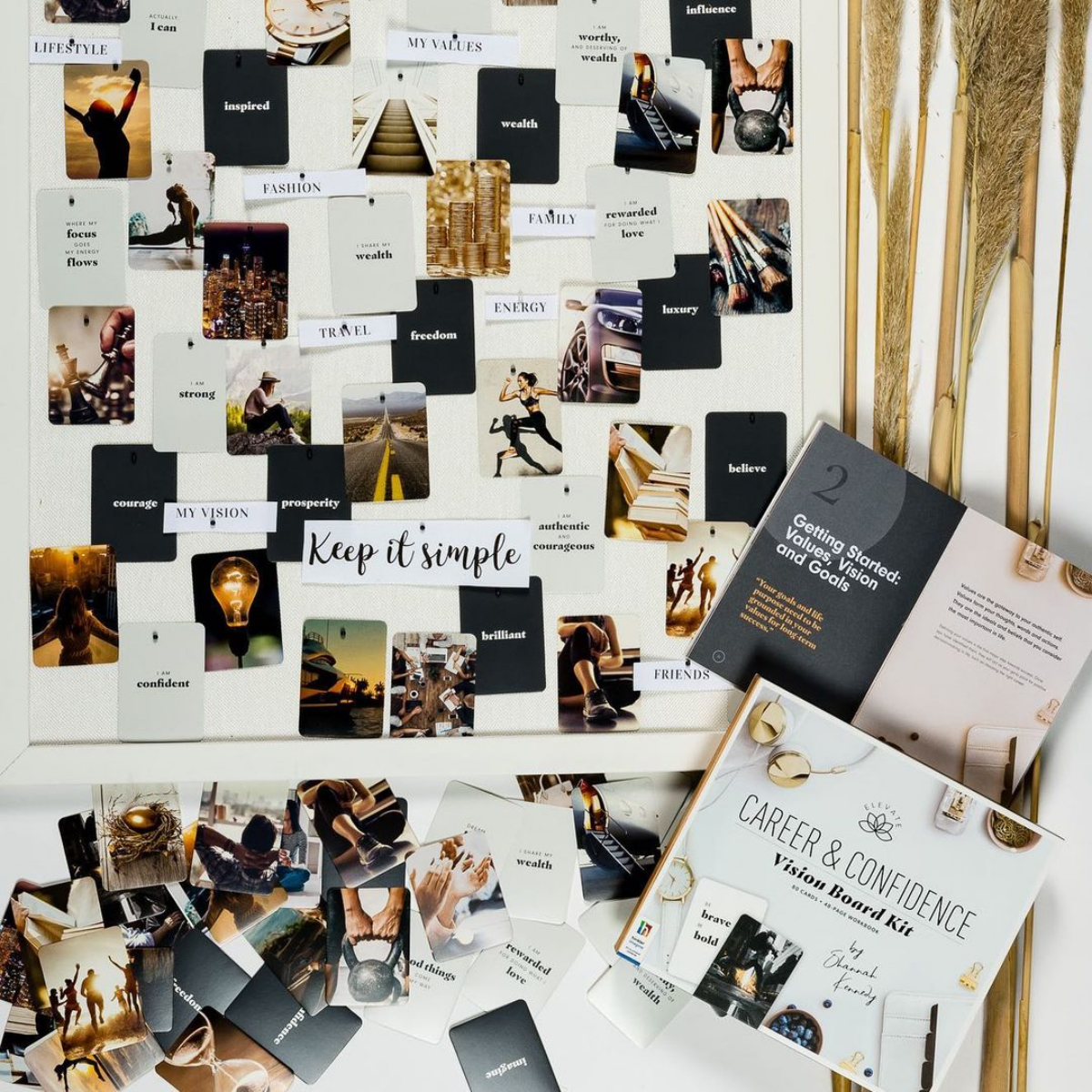
How to Assemble Your Board Like a Pro
How you arrange your board actually matters. A chaotic layout can create a sense of overwhelm, which is the opposite of what we want. Here are a few techniques that work well:
The Quadrant Method: This is my go-to for most people. Divide your board into the four areas we defined earlier (Growth, Experiences, Contribution, Foundation). This gives you a balanced visual map and ensures you aren’t just focusing on one part of your life, like work, at the expense of everything else.
The Central Hub Method: Place a photo of yourself in the middle—one where you look happy and confident. Then, arrange your goals around that central image. This layout constantly reminds you that you are the one making these things happen.
The Flow Method: This is a bit more advanced. You let the images and words flow into each other to show how your goals are interconnected. For example, you might place an image of you meditating peacefully next to a photo of your (wonderfully chaotic) family, with a printed word like “Patience” connecting them. This visually links how one practice supports another area of your life.
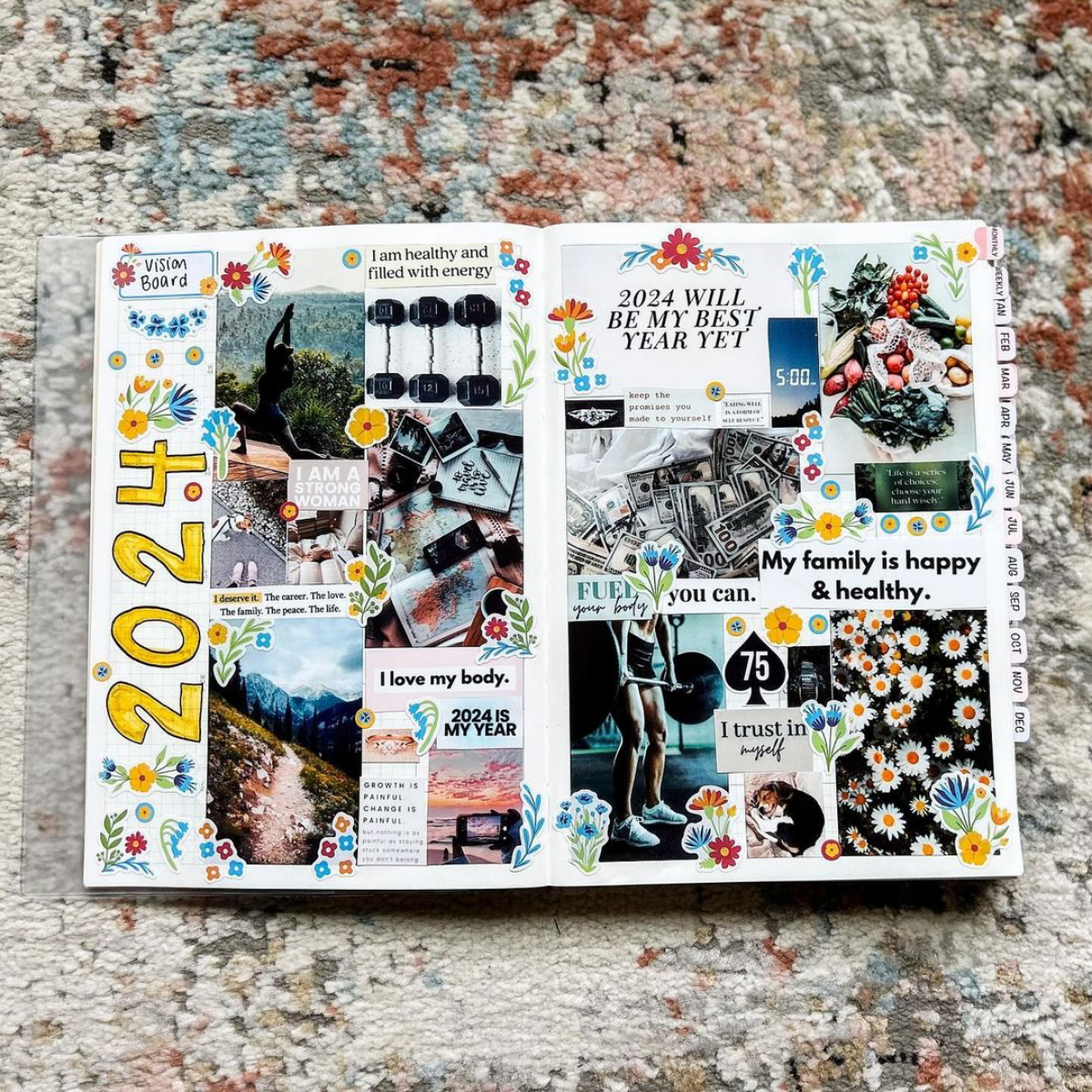
As you place each item on the board, take a second. Hold it. Connect with the goal it represents and feel the emotion of achieving it. This turns it from a task into a mindful ritual.
Heads Up! Common Vision Board Traps to Avoid
From my experience, I see people fall into a couple of common traps. Being aware of them from the start can save you a lot of frustration.
- The “Should” Board: This is a board filled with things you feel you should want, based on pressure from society, family, or social media. If looking at your board makes you feel a wave of pressure or imposter syndrome, you might have a “should” board. Be ruthless and ask, “Is this truly my goal, or someone else’s for me?”
- The “Overwhelm” Board: This happens when you try to put every single dream you’ve ever had onto one board. Instead of feeling focused, you feel anxious and paralyzed by how much there is to do. Remember, this is a tool for the next season of your life, not your entire life story. Start with 5-7 core goals. You can always change them later.
I once had a goal on my own board to get a specific high-powered job. I had the company logo, the title, everything. But after a few months of looking at it, I realized I didn’t want the stress that came with it. What I really wanted was the feeling of creative autonomy it represented. The board helped me clarify that, and I pivoted to building my own business instead. It’s okay to change your mind; in fact, it’s a sign the process is working!
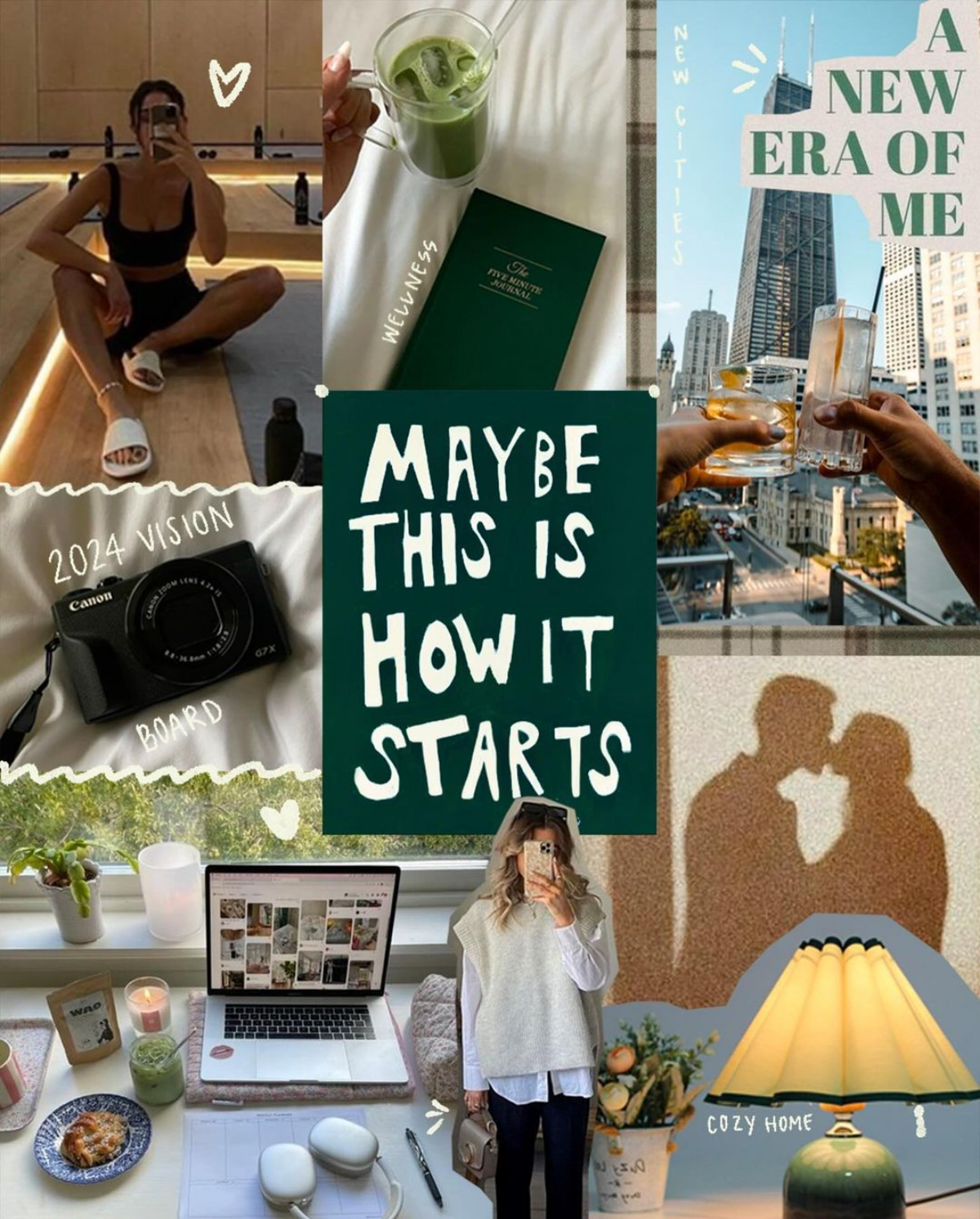
Making Your Board a Living, Breathing Tool
A vision board’s power comes from daily interaction. You can’t just hang it up and forget it.
Placement is everything. Put it somewhere you will see it every single day, period. Next to your bed, in your home office right in your line of sight. But what if you have roommates or just don’t want your goals on public display? That’s a totally valid concern. You can use a smaller board and keep it on your desk, or hang it on the inside of a closet door. It’s for your eyes, not for anyone else’s.
Build a five-minute review into your morning routine. Before you grab your phone, just stand in front of your board. Take a deep breath. Let your eyes wander over it. Then, pick one image and ask yourself, “What’s one tiny thing I can do today to move toward this?” It could be as small as sending one email or reading ten pages of a book. This connects your big vision to small, immediate actions.
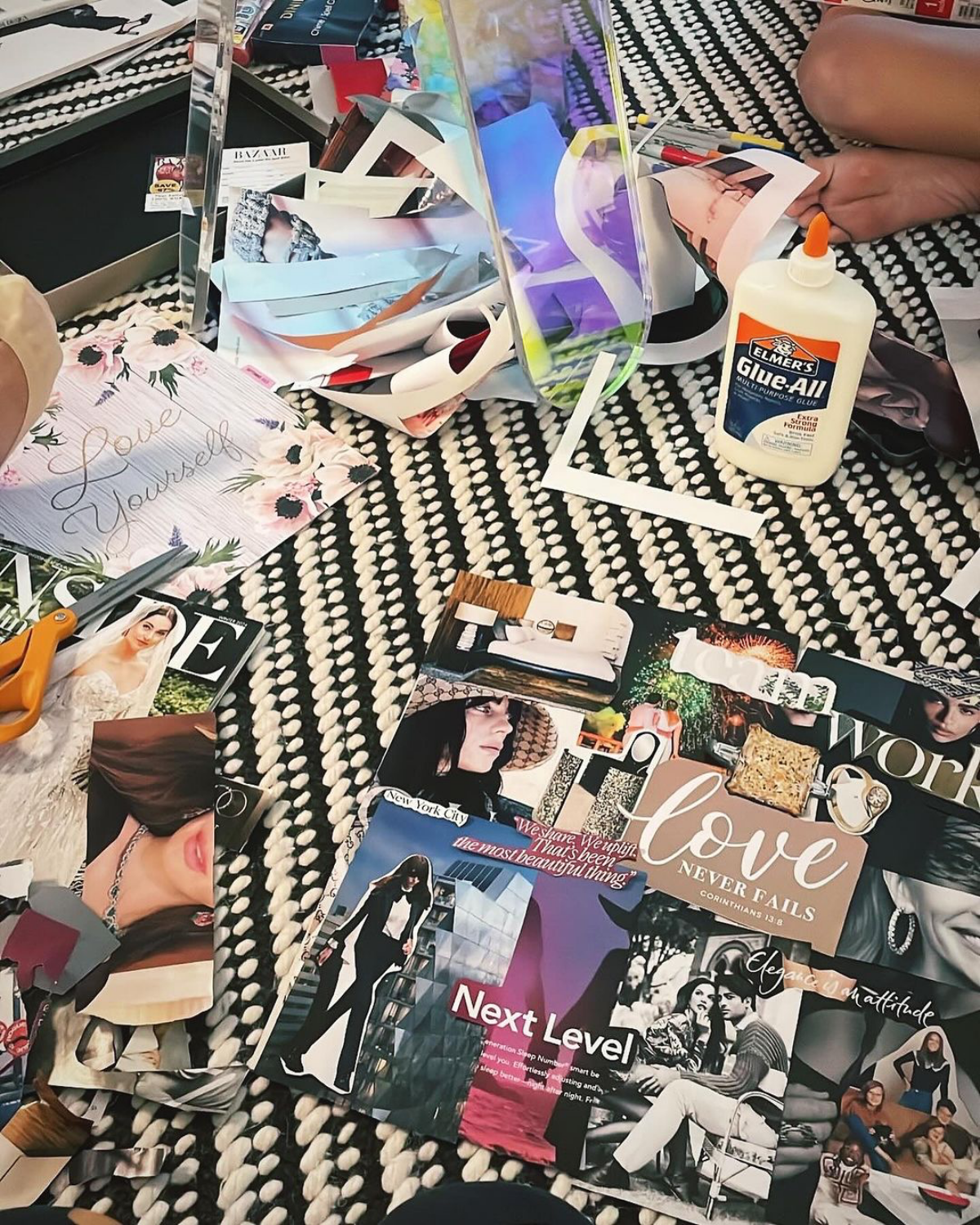
Finally, schedule a quarterly check-in. Every three months, sit down with your board. Celebrate what you’ve achieved! Maybe you move those images to a “wins” section. Re-evaluate the other goals. Are they still what you want? If not, take them down. Your vision board is a dynamic guide, not a stone tablet.
Galerie d’inspiration


Physical Board: The classic corkboard or magnetic whiteboard offers a tactile, permanent presence in your space. The physical act of cutting, pasting, and arranging creates a powerful kinetic connection to your goals. It’s always “on,” catching your eye during your daily routines.
Digital Board: Using an app like Pinterest or a design tool like Canva gives you flexibility and privacy. You can create a polished, easily editable board that lives on your phone or laptop screen saver. It’s perfect for those who prefer a minimalist space or want to tweak their vision on the go. There’s no right answer; choose the medium that you’ll engage with most consistently.
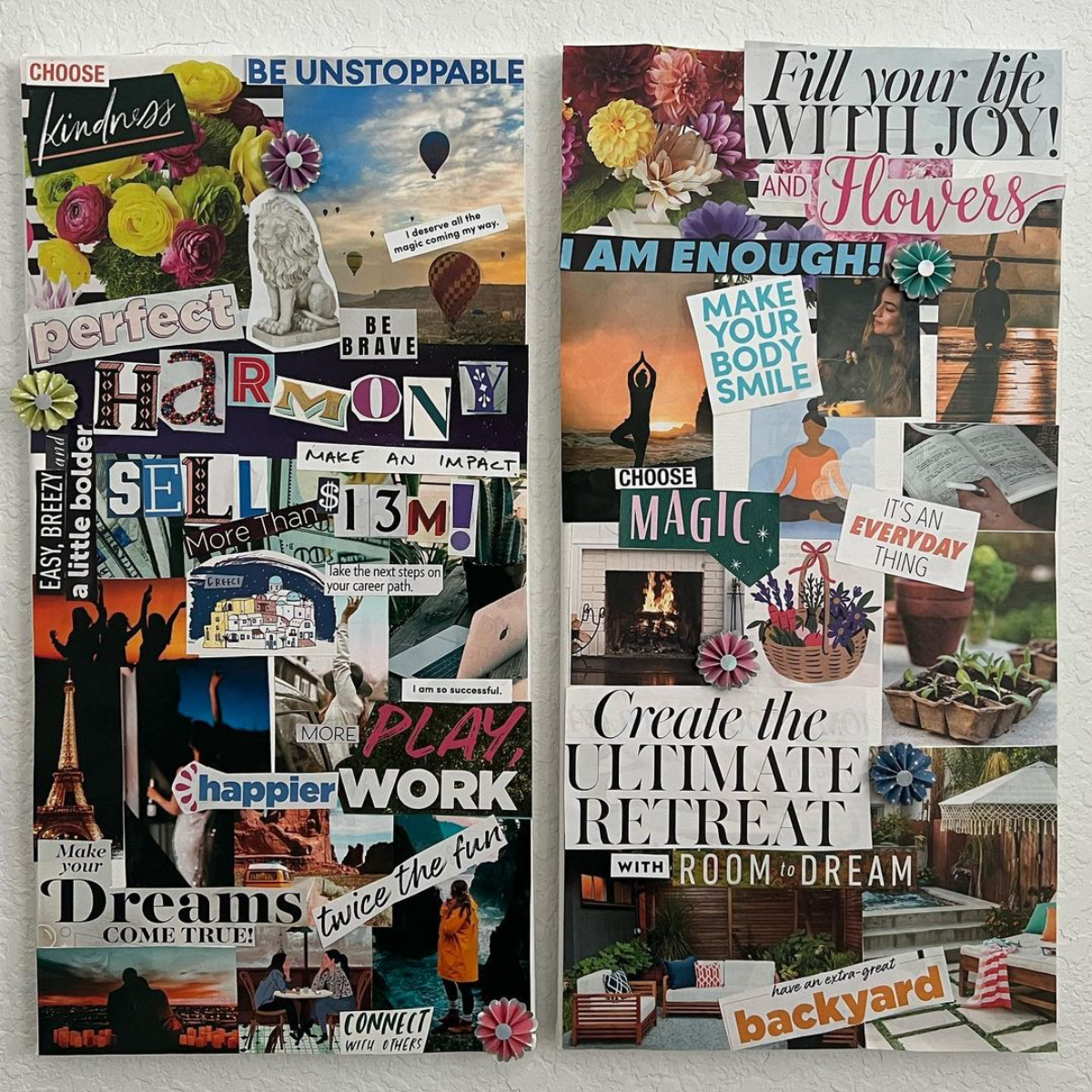
Beyond what you want to achieve, how do you want to feel?
This is the question that separates a good vision board from a great one. Instead of just pinning a picture of a beach, find an image that evokes the specific feeling you’re after: serenity, freedom, or vibrant energy. Add words like “Calm,” “Unburdened,” or “Energized.” Your subconscious mind responds more powerfully to emotions than to objects. A board that reflects your desired emotional state will guide your decisions on a much deeper, more intuitive level, pulling you toward experiences, not just things.
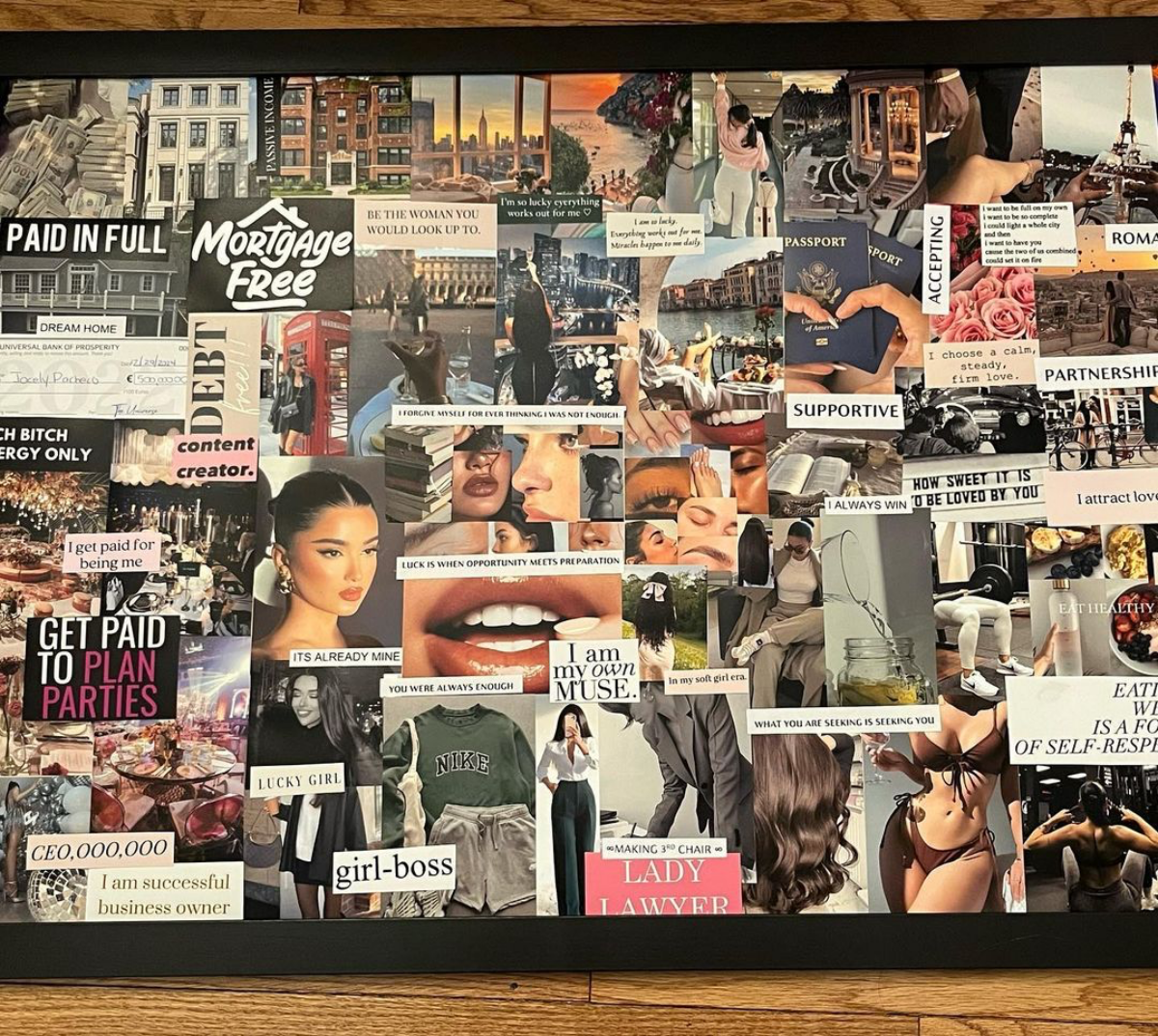
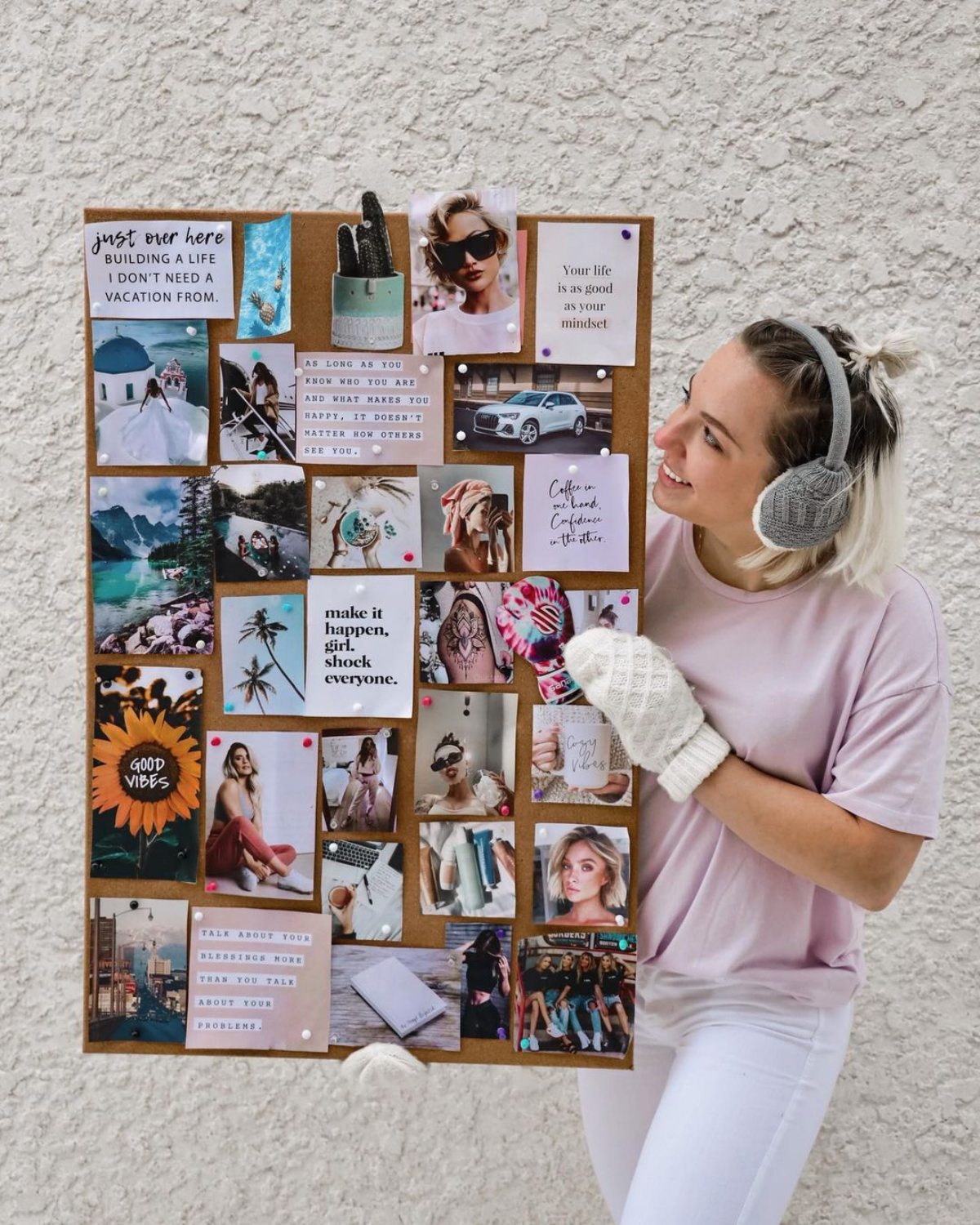
A vision board is a living document, not a static piece of art. To keep its power, it needs your attention. Think of it as a dynamic conversation with your future self. Here’s a simple ritual:
- Weekly Glance: Spend 5 minutes just looking at your board. Don’t analyze, just absorb. Let it remind you of your ‘why’.
- Monthly Check-in: Actively ask yourself: What progress have I made? Has anything shifted? Does this image or goal still resonate? Feel free to remove or replace elements that no longer serve you.
A powerful upgrade: Instead of just images of outcomes (the house, the promotion), add powerful action verbs that define the journey. Words like “Launch,” “Master,” “Connect,” “Nourish,” or “Explore” shift the focus from a passive wish to an active pursuit. These words act as commands to your brain, reminding you of the work and mindset required to turn your vision into reality.










